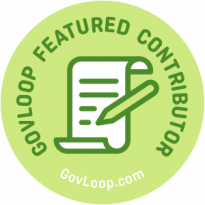Work-from-home and telework took the federal workforce by storm and became the norm during the pandemic and in the years following. This norm changed for federal workers when President Donald Trump issued a full-time return-to-office mandate for federal agencies and their employees in January. Deadlines for some employees to return to work arrived in February and others are approaching in the coming months.

As both federal people-managers and employees navigate the mass transition back to physical offices, all will need to navigate the uncertainty that comes with any major change — from adapting to a new schedule to planning their commute and maintaining work-life balance. To foster a smooth transition, people-managers can first acknowledge that back-to-the-office mandates may trigger stress and anxiety for some workers.
It can be hard to think about dramatically changing a daily routine after years of working from home. Some employees may be sad to lose the ability to have lunch with their family members or a partner around the kitchen table. Others may face transportation challenges or onerous commutes. In the worst case scenarios, some workers could experience elevated blood pressure or difficulty sleeping.
Overall, while return-to-work policies aim to restore traditional office dynamics, policies should be carefully balanced with the well-being and preferences of employees to maintain a healthy and productive workforce. People-managers can take steps to help create a productive and supportive work environment for employees as they return to the office full time.
Managing the Change
First, consider implementing confidential surveys to understand employees’ experiences with remote work, employee preferences for returning, and any unique concerns workforce members might have as individuals. The survey responses can help tailor strategies to help meet workforce needs and create a welcoming environment as employees continue to navigate this transition.
Second, it will be important for organizations to continue to leverage technology. Teleconferencing software that became popular during the pandemic is still relevant in the in-person work environment. Teams can always benefit from tools that facilitate collaboration and communication with colleagues in other departments and locations. Continuing to embrace and leverage technology ensures continuity and adaptability in the workplace — benefits that never lose value.
Technology also opens the door to continuous learning opportunities, which can boost morale and productivity. In a recent workplace learning survey, 88% of respondents said that providing learning opportunities is their number one retention strategy. Employees also rank learning high in their list of desired benefits. In this era of return-to-office mandates, people managers can set aside time and space for employees to learn together as a group, which can build community and togetherness.
Third, organizations can create a plan for helping employees feel welcome and supported in the new office environment. This might involve creating spaces dedicated to collaboration and brainstorming, or creating systems that give employees a sense of control and predictability with their seating arrangements. For example, some organizations harness technology like desk and room booking systems to help give employees without a dedicated office the certainty they’ll have a dedicated space when it is necessary for enhanced productivity.
Communicate
Finally, people-leaders should keep the lines of communication open and make a dedicated effort to make talent feel recognized and appreciated. This can be through formal recognition programs or simple gestures of appreciation.
In conclusion, implementing confidential surveys, continuing to leverage technology, creating welcoming office spaces, and maintaining open communication are essential steps for a smooth transition back to the office. By addressing employees’ unique concerns and preferences, fostering collaboration, and recognizing their efforts, organizations can create a supportive and productive work environment that benefits everyone.
Deanna Grady is an accomplished leader in the public sector, serving as Director and Head of Government Sales for North America at LinkedIn Talent Solutions. With over 20 years of sales experience, including 19 years in SaaS leadership, Deanna has dedicated her career to helping federal, state, and local government agencies meet mission-critical objectives. Her expertise in developing strategies for bridging hiring and skills gaps has driven year-over-year growth, enabling government agencies to address workforce challenges and achieve their goals through LinkedIn’s innovative hiring and learning solutions.





Leave a Reply
You must be logged in to post a comment.